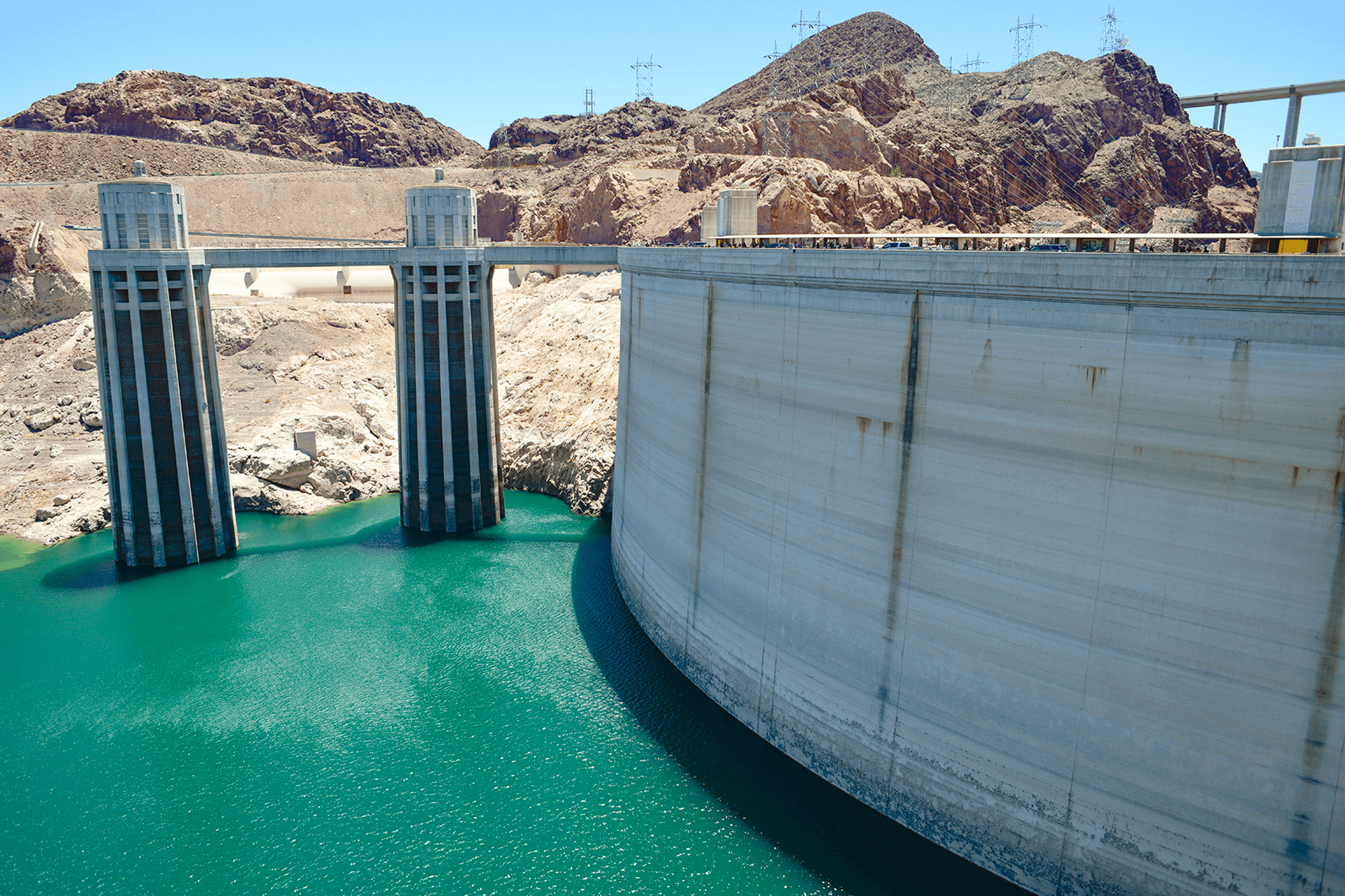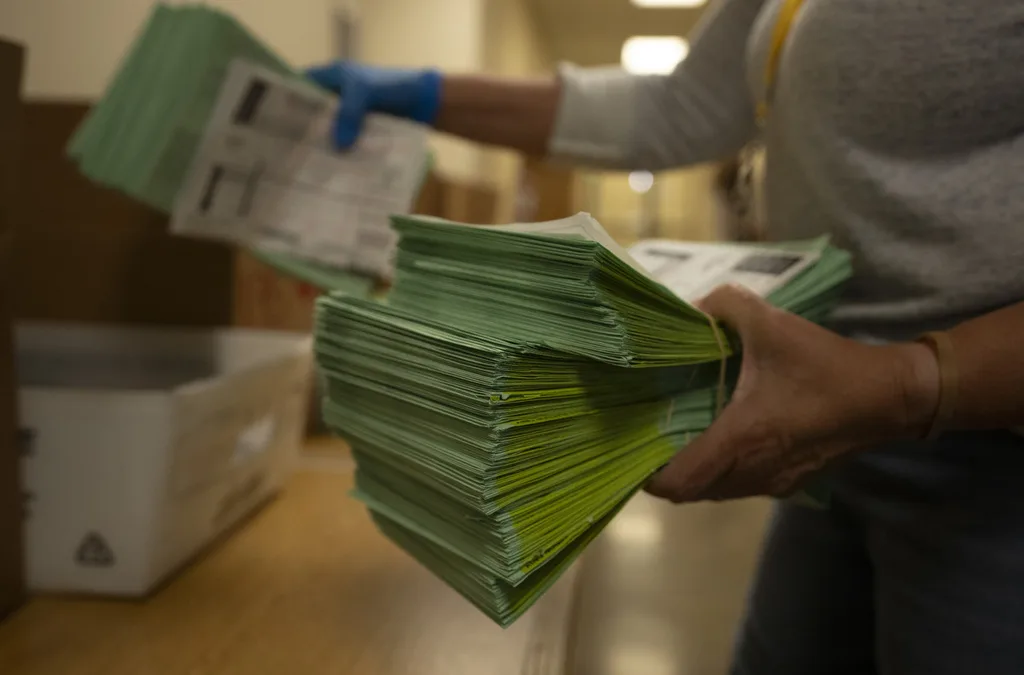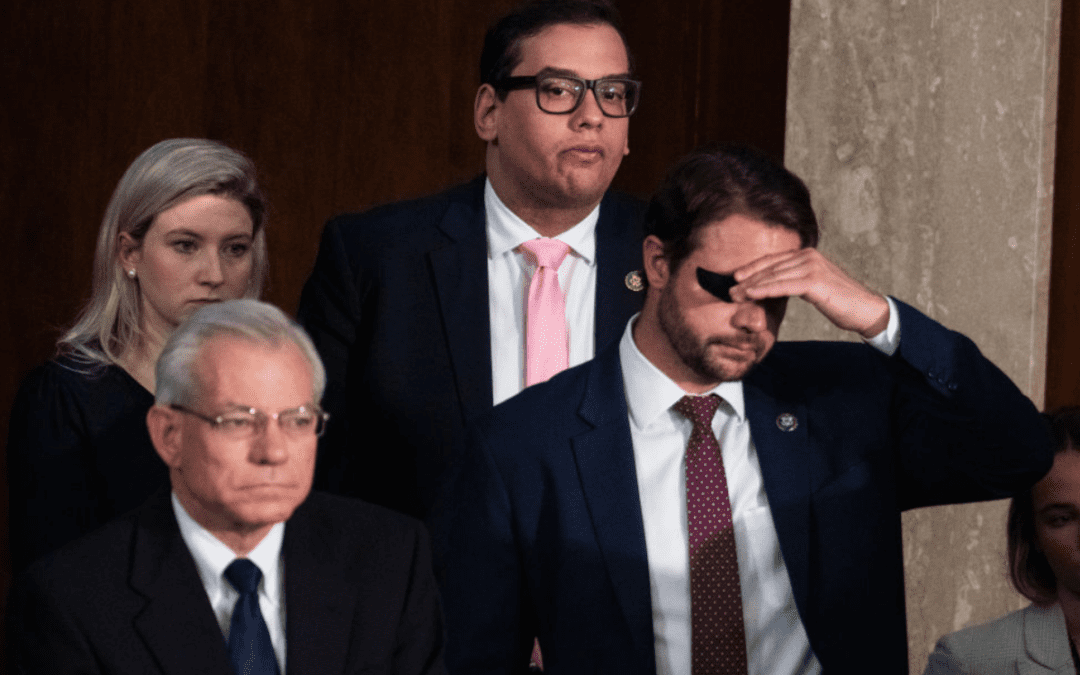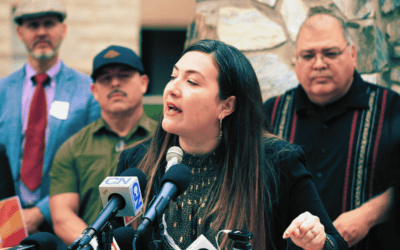
Photo by Christopher Clark/Bureau of Reclamation
When the US Supreme Court hears arguments Monday in Arizona v. Navajo Nation, it will be considering fairly technical legal questions, but the answers could have a large impact on water allocation in the Colorado River basin.
The case actually combines two cases, Arizona v. Navajo Nation and Department of the Interior v. Navajo Nation. Both involve the tribe’s claim that the federal government’s obligation to protect Navajo water rights includes water in the Colorado River, even though the river is not specifically mentioned in agreements with the tribe and in decades of case law.
The tribe said in court filings that the obligation was part of a “simple proposition” from the 19th century, when the government “promised the Navajos water” to encourage them to take up farming on reservation land.
“Because the government has breached its duty to provide sufficient water, the Navajo Nation sued the government for breach of trust, seeking an injunction requiring the government to assess the Nation’s water needs and develop a plan to meet them,” the tribe said.
But the government argues that it has long protected the tribe’s rights to water from Colorado River tributaries on the Navajo Nation, including the Little Colorado and San Juan rivers. The mainstem of the Colorado River has never been part of that protection, it said.
That was echoed in a court filing by Arizona and several other states and water districts siding with the federal government. They said that in “six decades of litigation, the United States never claimed reserved water rights in the mainstream of the LBCR (lower basin Colorado River) for the Navajo Reservation.”
State officials declined to comment on the pending case, as did the Navajo Nation Department of Water Resources and the Navajo president’s office. The Interior Department also declined comment, and a Navajo Department of Justice official was not immediately available to discuss the case.
But advocates said the case could determine whether Navajo officials will have a seat at the table when it comes to allocating water rights, which they called key to the tribe’s potential for health and economic development.
“To be able to develop industry, or to be able to develop agriculture, or to be able to lease to cities, I mean, that is extremely important for tribes,” said Sarah Porter, the director of Arizona State University’s Kyl Center for Water Policy.
“It’s one of the handful of ways that tribes can make life better for people in the tribe … to earn revenue and improve people’s lives, to be able to provide good education, good health care, all the other things that people should have,” she said.
The argument has roots at least a century old, when the Colorado River Compact in 1922 divided the river’s water between Upper Basin and Lower Basin states. Tribes were not part of those, or subsequent, negotiations but were instead represented by the federal government.
That was not always in the best interest of the tribes, said Michael Lerma, a policy analyst for Diné Policy Institute at Diné College. Despite its history of assuming a guardianship over Indian nations, the federal government has not fulfilled its responsibility to advocate for tribes’ best interests in public policy, he said.
“How do you (the federal government) make that decision in a different room and not consider … your quote-unquote word?” Lerma said.
In the 1950s, Arizona sued California over allocation of Colorado River water in a case that went directly to the US Supreme Court. Efforts by the Navajo and other tribes to join that suit or be represented by a special assistant attorney general were rejected by Interior, which said it would press claims to water in the basin on behalf of 25 tribes. But it said only five of those tribes had claims to the river itself, and the Navajo was not among them.
In its 1964 decree assigning rights to Colorado River water, the Supreme Court “excluded the Little Colorado River – and therefore the (Navajo) Nation’s claim – from the adjudication,” according to a 2021 ruling by the 9th US Circuit Court of Appeals. The Supreme Court also said in the 1964 decree that it would retain jurisdiction over the case for any future claims or modifications.
After decades of more legal disputes, the Navajo sued the federal government in 2003, claiming breach of trust. The tribe lost twice in the US District Court, which said the tribe’s complaint would amend the 1964 decree, something that only the Supreme Court can do.
But the 9th Circuit disagreed, ruling last year that the tribe was not seeking an allocation of water from the river. Instead, it said the tribe was trying to force the government to meet its obligations to determine the Navajos’ water needs and to “develop a plan to secure the water needed.”
That poses a challenge for the Interior Department, said Rhett Larson, a professor and senior research fellow for ASU’s Kyl Center. He said the agency cannot create a plan for managing Navajo water rights because those rights are currently unspecified.
“Now, that’s not asking for a whole lot on the surface,” Larson said. “But the federal government’s response is, how can we possibly have a plan to take care of your water if we don’t know how much water it is?
“They’re (the government) worried, ‘Look, if Navajo wins and we make a plan, the plan is going to be bad, and the Navajo is going to sue us for making a bad plan, and then we’re just right back where we started,’” Larson said.
Of the three states the Navajo Nation covers, Porter said Arizona is the only one where its water rights claims are not settled. Larson said the Navajos will be going to trial in a state court this summer to resolve their claims on the Little Colorado River.
Besides not having rights to mainstem water, Porter said the Navajo Nation currently relies on other sources because it does not have infrastructure to draw and deliver mainstream water to widely dispersed homes and businesses on the reservation.
“That means that the cost for that infrastructure is a lot higher in comparison with your typical neighborhood, in a city or even in a town where people live closer together,” Porter said.
But she said that if the tribe got rights to mainstem water, funding for infrastructure would likely follow.
At least one judge on the 9th Circuit acknowledged that the Navajo claim to mainstem water, if not handled properly, could “be used as a backdoor attempt” to get around the Supreme Court’s jurisdiction over the river. And Larson thinks that, ultimately, in order to create the plan the Navajo Nation wants, the Supreme Court will need to decree and quantify the tribe’s Colorado River rights.
Despite the complicated road to quantifying Navajo water rights, Lerma said a Supreme Court win will be a step closer toward the tribe having authority in water-use conversations.
“Allowing for Navajo Nation to have a seat at the table to plan with those other actors, you get a greater probability of success, I hope, rather than the state divvying up the water and leaving the Navajo Nation out completely,” Lerma said.
Lerma said he frequently sees Navajo families hauling water to their homes, along with “depression conditions with isolated pockets of prosperity.” If that’s going to change, he said, it is essential for Navajo leaders to be part of the discussion on myriad issues, including water access. Only then, he said, can they exercise leadership, or “naat’áanii.”
“That person has a responsibility to ensure that the livelihood of the citizens is best preserved and possibly expanded,” Lerma said. “It’s in the nature of that idea that the naat’áanii (are) the people that will push this idea to preserve the ability for future generations to have access to water.”
For more stories from Cronkite News, visit cronkitenews.azpbs.org.

He said what? 10 things to know about RFK Jr.
The Kennedy family has long been considered “Democratic royalty.” But Robert F. Kennedy, Jr.—son of Robert F. Kennedy, who was assassinated while...

Here’s everything you need to know about this month’s Mercury retrograde
Does everything in your life feel a little more chaotic than usual? Or do you feel like misunderstandings are cropping up more frequently than they...

Arizona expects to be back at the center of election attacks. Its officials are going on offense
Republican Richer and Democrat Fontes are taking more aggressive steps than ever to rebuild trust with voters, knock down disinformation, and...

George Santos’ former treasurer running attack ads in Arizona with Dem-sounding PAC name
An unregistered, Republican-run political action committee from Texas with a deceptively Democratic name and ties to disgraced US Rep. George Santos...




